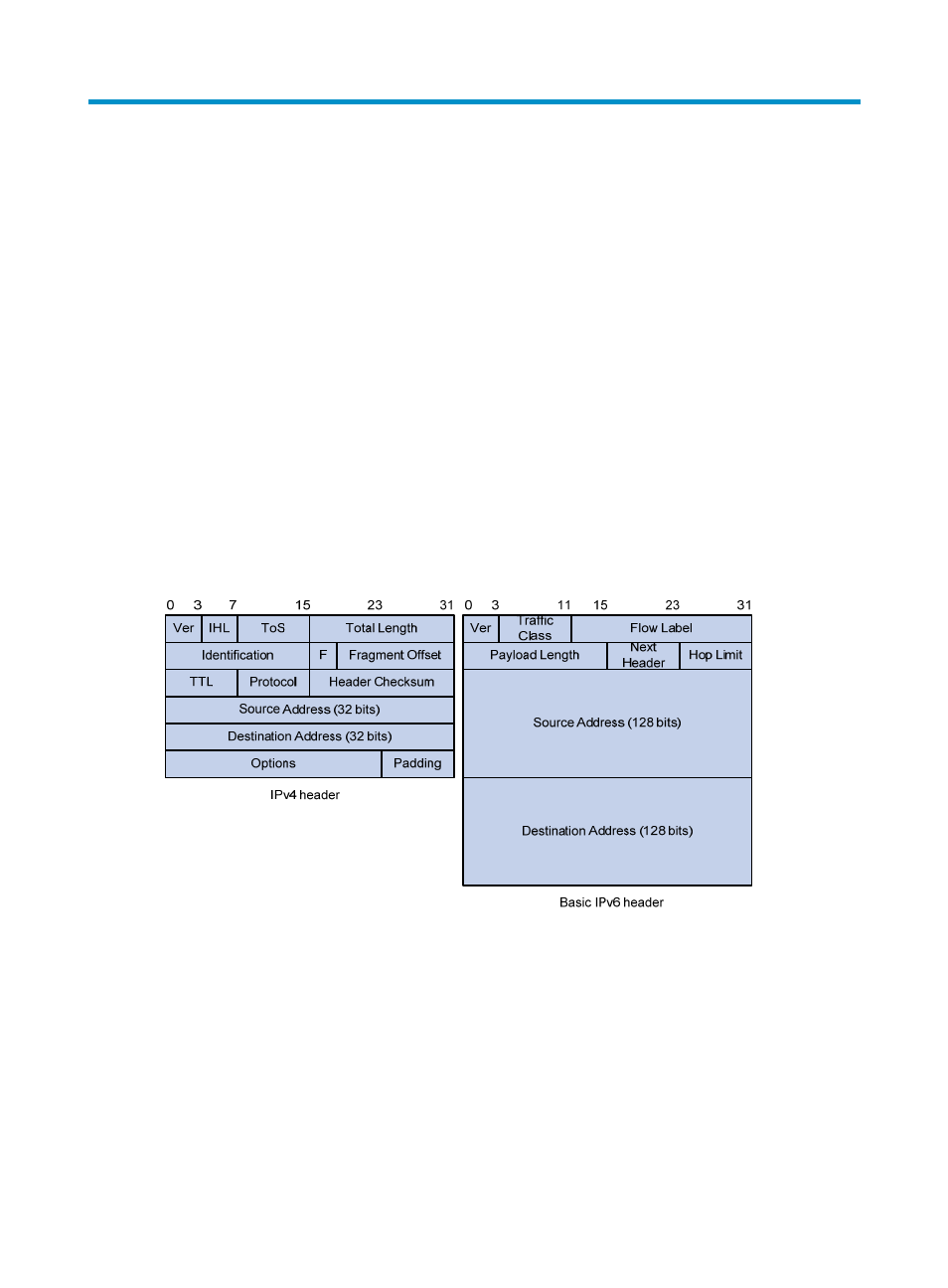Configuring basic ipv6 settings, Overview, Ipv6 features – H3C Technologies H3C SecPath F1000-E User Manual
Page 702: Simplified header format, Larger address space, Hierarchical address structure, Address autoconfiguration

677
Configuring basic IPv6 settings
Overview
Internet Protocol Version 6 (IPv6), also called IP next generation (IPng), was designed by the Internet
Engineering Task Force (IETF) as the successor to Internet Protocol version 4 (IPv4). The significant
difference between IPv6 and IPv4 is that IPv6 increases the IP address size from 32 bits to 128 bits.
IPv6 features
Simplified header format
IPv6 removes several IPv4 header fields or moves them to the IPv6 extension headers to reduce the length
of the basic IPv6 packet header. The basic IPv6 packet header has a fixed length of 40 bytes to simplify
IPv6 packet handling and to improve the forwarding efficiency. Although an IPv6 address size is four
times larger than an IPv4 address, the basic IPv6 packet header size is only twice the size of the
option-less IPv4 packet header.
Figure 353 IPv4 packet header format and basic IPv6 packet header format
Larger address space
The source and destination IPv6 addresses are 128 bits (or 16 bytes) long. IPv6 can provide 3.4 x 10
38
addresses to meet the requirements of hierarchical address division and the allocation of public and
private addresses.
Hierarchical address structure
IPv6 uses the hierarchical address structure to speed up route lookups and reduce the IPv6 routing table
size through route aggregation.
Address autoconfiguration
To simplify host configuration, IPv6 supports stateful and stateless address autoconfiguration.
- H3C SecPath F5000-A5 Firewall H3C SecPath F1000-A-EI H3C SecPath F1000-E-SI H3C SecPath F1000-S-AI H3C SecPath F5000-S Firewall H3C SecPath F5000-C Firewall H3C SecPath F100-C-SI H3C SecPath F1000-C-SI H3C SecPath F100-A-SI H3C SecBlade FW Cards H3C SecBlade FW Enhanced Cards H3C SecPath U200-A U200-M U200-S H3C SecPath U200-CA U200-CM U200-CS H3C SecBlade LB Cards H3C SecPath L1000-A Load Balancer